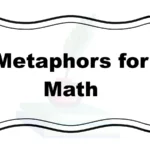Feeling anxious can be overwhelming, and finding the right words to describe that tension helps others truly understand what you’re going through. Similes let you paint a vivid picture of anxiety—turning invisible butterflies into a storm of sensations. By comparing anxiety to familiar images like a jittery leaf or a tight drum, your message becomes more relatable, empathetic, and memorable. Whether you’re writing a journal, comforting a friend, or crafting creative content, these similes will help you communicate the weight and nuance of anxiety with warmth and care.
What Does “Similes for Anxiety” Mean?
Similes for anxiety are comparisons using “like” or “as” that convey the physical and emotional intensity of anxious feelings. Instead of simply stating “I feel anxious,” similes bring that emotion to life—like being “as tight as a drum” or “as churning as an angry sea.” These vivid images help readers or listeners experience the sensation in a more tangible way, fostering empathy and deeper understanding.
When to Use “Similes for Anxiety”
You should use similes for anxiety when you want to describe inner turmoil, nervous anticipation, or physical tension in a way that feels both creative and relatable. They work well in personal essays, therapeutic writing, social media posts, or even conversations with loved ones—any time you want your description to be clear, honest, and filled with emotional resonance.
Pros and Cons of Using Similes for Anxiety
Pros:
- Creates empathy by making abstract feelings concrete
- Enhances clarity when simple words fall short
- Adds emotional depth to personal narratives
- Engages readers through vivid, memorable imagery
- Encourages connection by sharing relatable experiences
Cons:
- Overuse can feel melodramatic in some contexts
- Some similes may confuse if the image is unfamiliar
- Not ideal for highly formal writing or clinical reports
- Can distract from straightforward communication
- Risk of cliché if common comparisons are repeated
1. As jittery as a leaf in a storm
Definition: Compares anxious trembling to a leaf blown by wind.
Detailed Explanation: Anxiety often makes you feel unsteady and shaken, like a fragile leaf caught in gale-force gusts.
Scenario Example: She spoke to the crowd as jittery as a leaf in a storm, her voice quivering with nerves.
Best Use: Describing physical trembling or nervous energy.
Worst Use: Avoid for calm or steady situations.
Tone: Vulnerable, vivid, urgent
3 Other Ways to Say It:
- Shaking like an aspen leaf
- Quaking like a loose branch
- Trembling as a frightened sparrow
2. As tight as a drum
Definition: Compares bodily tension to the taut surface of a drum.
Detailed Explanation: When anxiety strikes, muscles clench and the chest often feels rigid, much like a drumhead stretched to the limit.
Scenario Example: His shoulders were as tight as a drum before the job interview.
Best Use: Illustrating muscular stiffness or chest tightness.
Worst Use: Not for relaxed or loose contexts.
Tone: Intense, physical, immediate
3 Other Ways to Say It:
- Rigid like a steel bar
- Stretched like a guitar string
- Hard as a board
3. As knotted as tangled holiday lights
Definition: Compares tangled thoughts to a mess of wires.
Detailed Explanation: An anxious mind often loops and twists, creating confusion similar to untangling holiday lights after storage.
Scenario Example: His thoughts felt as knotted as tangled holiday lights when deadlines loomed.
Best Use: Describing mental confusion or overthinking.
Worst Use: Avoid when describing focused clarity.
Tone: Frustrated, chaotic, relatable
3 Other Ways to Say It:
- Twisted like earphones in a pocket
- Messy like jumbled cords
- Snarled as knotted yarn
4. As churning as an angry sea
Definition: Compares emotional turmoil to turbulent waves.
Detailed Explanation: Anxiety can feel like relentless waves crashing inside your chest, never settling.
Scenario Example: Her stomach was as churning as an angry sea before the exam.
Best Use: Conveying stomach knots or emotional unrest.
Worst Use: Not for calm, settled feelings.
Tone: Dramatic, intense, immersive
3 Other Ways to Say It:
- Roiling like stormy water
- Tumultuous as rough tides
- Agitated like a boiling cauldron
5. As restless as a caged bird
Definition: Compares anxious pacing to a trapped bird’s movements.
Detailed Explanation: Anxiety often makes you pace or fidget, mirroring the frantic energy of a bird longing for freedom.
Scenario Example: He prowled the hallway as restless as a caged bird awaiting release.
Best Use: Illustrating pacing, fidgeting, or mental restlessness.
Worst Use: Avoid for peaceful, stationary contexts.
Tone: Urgent, frustrated, vivid
3 Other Ways to Say It:
- Fidgeting like a trapped mouse
- Pacing like a confined tiger
- Itching like restless skin
6. As prickly as a porcupine
Definition: Compares anxious defensiveness to sharp quills.
Detailed Explanation: When anxious, people can become guarded or irritable, like a porcupine raising its quills in defense.
Scenario Example: She answered questions as prickly as a porcupine when under pressure.
Best Use: Describing defensive, irritable behavior.
Worst Use: Not for open, friendly interactions.
Tone: Protective, sharp, tense
3 Other Ways to Say It:
- Bristling like unfurled needles
- Thorny as a cactus
- Guarded like a hedgehog
7. As fluttery as a hummingbird’s wings
Definition: Compares rapid heartbeats to tiny wing flutters.
Detailed Explanation: Anxiety makes hearts race and flutter, similar to the quick wingbeats of a hummingbird hovering in place.
Scenario Example: Her heart felt as fluttery as a hummingbird’s wings during the speech.
Best Use: Describing rapid heartbeat or nervous excitement.
Worst Use: Avoid when calm or slow rhythms are meant.
Tone: Light, vivid, physical
3 Other Ways to Say It:
- Beating like a humming motor
- Pattering like raindrops
- Flickering like candlelight
8. As tense as a drawn bow
Definition: Compares internal tension to a bow string pulled back.
Detailed Explanation: Anxiety stretches you thin, storing energy that feels ready to snap—like a bowstring drawn tight.
Scenario Example: He stood as tense as a drawn bow before the competition.
Best Use: Emphasizing built-up tension or anticipation.
Worst Use: Not for relaxed, effortless situations.
Tone: Anticipatory, edgy, focused
3 Other Ways to Say It:
- Stretched like an elastic band
- Primed like a loaded spring
- Strained like tight rope
9. As shaky as an old bridge
Definition: Compares unsteady nerves to a rickety structure.
Detailed Explanation: Anxiety can make you feel off-balance and unsteady, like crossing a worn-out bridge.
Scenario Example: She felt as shaky as an old bridge stepping onto the stage.
Best Use: Describing unsteadiness or insecurity.
Worst Use: Not for confident or sturdy feelings.
Tone: Uneasy, vivid, cautious
3 Other Ways to Say It:
- Unsteady like a wobbling chair
- Quivering as a loose railing
- Wobbly like jelly
10. As heavy as an overloaded backpack
Definition: Compares mental burden to a weighty load.
Detailed Explanation: Anxiety often feels like carrying too many worries, pressing down on you like an overloaded pack.
Scenario Example: His mind was as heavy as an overloaded backpack on the final hike.
Best Use: Illustrating emotional burden or overwhelm.
Worst Use: Avoid when lightness is intended.
Tone: Weighty, empathetic, clear
3 Other Ways to Say It:
- Bulky like stacked bricks
- Laden like a full shopping cart
- Burdened as a weighted vest
11. As fraught as a ticking time bomb
Definition: Compares looming anxiety to imminent explosion.
Detailed Explanation: When anxiety builds, it can feel like a bomb counting down, ready to erupt.
Scenario Example: She approached the deadline as fraught as a ticking time bomb.
Best Use: Conveying high-stakes pressure or panic.
Worst Use: Not for mild concern.
Tone: Urgent, dramatic, tense
3 Other Ways to Say It:
- Ticking like a stopwatch at zero
- Explosive like a primed fuse
- Ready to blow like a grenade
12. As choked as a blocked pipe
Definition: Compares emotional constriction to clogged plumbing.
Detailed Explanation: Anxiety can feel like a blockage in your throat or chest, preventing easy breathing or speaking.
Scenario Example: He swallowed hard, feeling as choked as a blocked pipe.
Best Use: Describing difficulty speaking or breathing.
Worst Use: Not for smooth, open communication.
Tone: Constricted, visceral, urgent
3 Other Ways to Say It:
- Gagging like swallowed cotton
- Strangled like twisted hose
- Clogged as clogged artery
13. As boiling as a tea kettle
Definition: Compares rising panic to steam building.
Detailed Explanation: Anxiety often starts slow but can build pressure rapidly—like water heating until it whistles.
Scenario Example: Her thoughts were as boiling as a tea kettle before the confrontation.
Best Use: Illustrating escalating stress or irritation.
Worst Use: Avoid for calm or cooling situations.
Tone: Intense, rising, clear
3 Other Ways to Say It:
- Steaming like a pressure cooker
- Bubbling like hot lava
- Fuming like heated iron
14. As trembling as a leaf in autumn
Definition: Compares cold-induced shaking to anxiety tremors.
Detailed Explanation: Anxiety can cause your body to tremble involuntarily, like chilled leaves fluttering before they fall.
Scenario Example: His hands were as trembling as a leaf in autumn during the call.
Best Use: Describing visible shaking or cold sweats.
Worst Use: Not for warm, steady moments.
Tone: Fragile, evocative, clear
3 Other Ways to Say It:
- Quivering like cold limbs
- Shivering as frostbitten skin
- Fluttering like nervous wings
15. As coiled as a spring
Definition: Compares pent-up energy to compressed metal.
Detailed Explanation: Anxiety loads you with energy that feels confined, ready to snap or release unpredictably.
Scenario Example: She paced as coiled as a spring before the announcement.
Best Use: Illustrating suppressed tension or anticipation.
Worst Use: Avoid when describing release or relief.
Tone: Tense, contained, vivid
3 Other Ways to Say It:
- Wound like a clockwork toy
- Stressed like a stretched rubber band
- Tight as a loaded coil
16. As raw as open skin
Definition: Compares emotional vulnerability to exposed flesh.
Detailed Explanation: Anxiety can leave you feeling painfully exposed and sensitive, like raw, unprotected skin.
Scenario Example: After the loss, she felt as raw as open skin when talking about it.
Best Use: Describing deep emotional vulnerability.
Worst Use: Not for lighthearted contexts.
Tone: Painful, exposed, honest
3 Other Ways to Say It:
- Naked as stripped bark
- Tender like fresh wound
- Sensitive as sunburned skin
17. As electric as live wires
Definition: Compares nervous excitement to charged electricity.
Detailed Explanation: Anxiety often creates a buzzing energy in your veins, like touching a live wire.
Scenario Example: He felt as electric as live wires waiting for the performance to start.
Best Use: Describing jittery anticipation or excitement.
Worst Use: Not for calm, static moments.
Tone: Charged, vivid, intense
3 Other Ways to Say It:
- Buzzing like neon lights
- Thrumming like active circuits
- Sparking as arc flash
18. As stuck as molasses in January
Definition: Compares feeling stuck to thick syrup in cold.
Detailed Explanation: Anxiety can freeze progress, making every step feel heavy and slow, like molasses in cold weather.
Scenario Example: She wrestled with the problem as stuck as molasses in January.
Best Use: Illustrating difficulty moving forward or thinking.
Worst Use: Avoid for fluid or rapid actions.
Tone: Sluggish, obstructed, clear
3 Other Ways to Say It:
- Clinging like wet cement
- Slow as cooled honey
- Frozen like icy sludge
19. As racing as a runaway train
Definition: Compares frantic thoughts to an uncontrolled locomotive.
Detailed Explanation: Anxiety can send thoughts speeding uncontrollably, like a train off its tracks.
Scenario Example: His mind was as racing as a runaway train before the conference call.
Best Use: Depicting rapid, overwhelming thought patterns.
Worst Use: Not for measured or calm thinking.
Tone: Chaotic, urgent, vivid
3 Other Ways to Say It:
- Speeding like bullet train
- Blurring like passing scenery
- Zooming like supersonic jet
20. As prickling as needles on skin
Definition: Compares anxious tingling to tiny pricks.
Detailed Explanation: Anxiety can cause pins-and-needles sensations, making your skin feel prickly and uneasy.
Scenario Example: She felt as prickling as needles on skin in the crowded room.
Best Use: Describing physical tingles or nerve sensations.
Worst Use: Avoid for smooth, comfortable feelings.
Tone: Uneasy, tactile, vivid
3 Other Ways to Say It:
- Tingling like electric shock
- Prickly as stubble
- Nerve-jangling as static
21. As suffocating as a wet blanket
Definition: Compares oppressive anxiety to damp cloth.
Detailed Explanation: Anxiety can feel stifling and heavy, like being wrapped in a cold, wet blanket.
Scenario Example: His chest tightened as suffocating as a wet blanket during the confrontation.
Best Use: Conveying oppressive emotional weight.
Worst Use: Not for light or freeing contexts.
Tone: Heavy, stifling, urgent
3 Other Ways to Say It:
- Smothering like plastic wrap
- Crushing as lead vest
- Choking like thick smoke
22. As roaring as thunder in your chest
Definition: Compares loud internal panic to thunder.
Detailed Explanation: Anxiety can make your heartbeat feel thunderous, as if storms rage inside.
Scenario Example: He felt as roaring as thunder in your chest when the sirens wailed.
Best Use: Illustrating pounding heartbeat or panic.
Worst Use: Not for soft or subdued moments.
Tone: Dramatic, intense, visceral
3 Other Ways to Say It:
- Pounding like war drums
- Thumping like jackhammer
- Beating like hammer on anvil
23. As dark as a bottomless pit
Definition: Compares deep despair to an endless void.
Detailed Explanation: Severe anxiety can feel like plunging into darkness with no ground in sight.
Scenario Example: She described her mood as dark as a bottomless pit during her worst panic attack.
Best Use: Depicting extreme fear or hopelessness.
Worst Use: Avoid mild worry.
Tone: Desperate, heavy, intense
3 Other Ways to Say It:
- Void like empty well
- Abyssal as ocean trench
- Dreadful like endless night
24. As twisting as a labyrinth
Definition: Compares convoluted thoughts to a maze.
Detailed Explanation: Anxiety can trap you in circles of worry, like wandering a complex labyrinth.
Scenario Example: His reasoning felt as twisting as a labyrinth when the problem arose.
Best Use: Illustrating confusing, recursive thinking.
Worst Use: Avoid for straightforward clarity.
Tone: Confusing, immersive, tense
3 Other Ways to Say It:
- Maze-like as hedge garden
- Winding like a mountain path
- Circling as twisted roads
25. As pulsing as a racing heartbeat
Definition: Compares intense heartbeat to visible pulsing.
Detailed Explanation: Anxiety often makes your pulse pound loudly, as if you can see it throbbing under your skin.
Scenario Example: She felt as pulsing as a racing heartbeat before stepping onto the stage.
Best Use: Depicting heightened physical arousal or panic.
Worst Use: Not for calm or slow moments.
Tone: Energetic, visceral, clear
3 Other Ways to Say It:
- Throbbing like bass drum
- Pattering like raindrops on tin
- Hammering like jackhammer
Conclusion:
Similes for anxiety transform abstract fear into tangible experiences—from the jittery leaf in a storm to the roaring thunder in your chest. By using these comparisons, you can share your inner turmoil with clarity and evoke genuine empathy. For example, saying “as tight as a drum” instantly conveys muscle tension, while “as churning as an angry sea” paints emotional unrest. These similes are best used when you want to make anxiety relatable, vivid, and honest, giving your words a visceral tone that resonates deeply with readers.
MCQs:
1. “As tight as a drum” illustrates:
A) Calm relaxation
B) Muscle tension and rigidity
C) Confusion
D) Joy
Answer: B
2. “As jittery as a leaf in a storm” best describes:
A) Steadiness
B) Physical trembling from nerves
C) Happiness
D) Sleepiness
Answer: B
3. Which simile conveys mental confusion?
A) As churning as an angry sea
B) As coiled as a spring
C) As knotted as tangled holiday lights
D) As still as a forest glade
Answer: C
4. “As restless as a caged bird” refers to:
A) Peaceful contentment
B) Fruition of plans
C) Frantic pacing or fidgeting
D) Deep sleep
Answer: C
5. “As fraught as a ticking time bomb” suggests:
A) Steady calm
B) Imminent explosion of stress
C) Gentle warmth
D) Slow movement
Answer: B
6. “As choking as a blocked pipe” describes:
A) Ease of breathing
B) Difficulty speaking or breathing
C) Laughter
D) Relaxation
Answer: B
7. Which simile fits rising panic?
A) As boiling as a tea kettle
B) As calm as dawn mist
C) As gentle as a breeze
D) As stable as a mountain
Answer: A
8. “As coiled as a spring” highlights:
A) Melted relaxation
B) Contained tension and anticipation
C) Clear thinking
D) Emotional release
Answer: B
9. Which simile describes a heavy emotional burden?
A) As fluttery as a hummingbird’s wings
B) As heavy as an overloaded backpack
C) As light as a feather
D) As flowing as a river
Answer: B
10. “As stuck as molasses in January” is used for:
A) Rapid movement
B) Feeling immobilized or blocked
C) Loud noise
D) Emotional release
Answer: B
11. Which simile represents physical tingles?
A) As prickling as needles on skin
B) As steady as a clock
C) As hollow as a tunnel
D) As flat as paper
Answer: A
12. “As roaring as thunder in your chest” conveys:
A) Quiet peace
B) Pounding panic or fear
C) Gentle calm
D) Slow breathing
Answer: B
13. Which simile illustrates defensive irritability?
A) As fluttery as wings
B) As prickly as a porcupine
C) As smooth as silk
D) As clear as glass
Answer: B
14. “As electric as live wires” best fits:
A) Static calm
B) Buzzing nervous excitement
C) Soft serenity
D) Deep sleep
Answer: B
15. Which simile depicts extreme hopelessness?
A) As dark as a bottomless pit
B) As light as air
C) As crisp as autumn leaves
D) As bright as the sun
Answer: A
FAQs:
1. What makes a good simile for anxiety?
A good simile for anxiety connects a physical sensation or emotion to a familiar image—such as a tight drum or angry sea—so readers can feel the tension and empathize easily.
2. Can I use these similes in therapy or journaling?
Absolutely. These similes can help you process emotions, describe your experience clearly, and share your feelings with therapists, friends, or support groups.
3. Are these similes suitable for academic writing?
They’re best for creative, personal, or therapeutic contexts. In formal academic papers, use them sparingly to avoid overly poetic tone.
4. How do I choose the right simile for my situation?
Consider the type of anxiety—physical, mental, or emotional—and select a simile that mirrors that sensation, whether it’s trembling, weighed down, or pounding.
5. Can I modify these similes to fit my personal style?
Yes! Feel free to adapt or combine these similes—making them unique to your voice and experience will create the strongest connection with your audience.




